As a small or mid-sized business, utilizing marketing resources efficiently is essential. While you may want to minimize your spending by completing as much business in-house as possible, sometimes that can do more harm than good. Suppose you don’t already have a team staffed with knowledgeable individuals in business and marketing. In that case, it can be challenging to effectively promote your brand while generating revenue for your products or services. For that reason, enlisting the help of marketing professionals is a must. While spending money on outside help may make some businesses bristle, several options are worth exploring, including hiring a fractional CMO, a digital marketing consultant, or a traditional marketing agency.
What is a Fractional CMO?
A fractional chief marketing officer (CMO) is an individual who can provide a small to mid-sized business with professional insight in several areas, including customer acquisition,
sales/funnels/pipelines, marketing execution, and more. They are typically brought on as a consultant to help manage an enterprise’s marketing functions on a short-term basis.
These individuals have the necessary skills to oversee your organization’s marketing design, development, and execution to ensure you meet your sales goals. They also have the leadership ability to give you the executive-level expertise you may lack in your current staff. What makes a fractional CMO beneficial to many small to mid-sized businesses is that they provide your brand with all this expertise without the additional costs of employing a CMO full-time. Depending on what you need help with, a fractional CMO can provide you with all the necessary insights at a fraction of the cost of hiring a CMO. Fractional CMOs usually engage with a company for six months or more. This timeline is important for establishing a high level of commitment from both parties. Weekly hours can range from ten hours or more, depending on the needs of the enterprise.
What Services Do Fractional CMOs offer?
As a temporary leader of your marketing team, a fractional CMO generally provides several services.
Customer Identification/Acquisition
Fractional CMOs help you identify your target audience. Then, fractional CMOs help you strategize the best ways to engage them.
Sales Cycle Building/Execution
Once your ideal target audience is identified, a fractional CMO will take that information and help you build a sales pipeline/cycle that captures your audience’s attention, helps nurture customer relationships, and encourages them through the sales cycle.
Marketing Strategy/Execution
Depending on your business goals, your fractional CMO will help you with marketing/content strategy design and execution. The strategy can fall under either digital marketing, traditional or a mix of the two.
Metric Measurement/Analysis
Once your marketing strategy has been designed and implemented, the fractional CMO will help you measure the success of all campaigns. Not only will they help you monitor vital metrics, but they’ll help you break down all the information you collect to help your team better understand what the data means.
The primary goal for most brands that hire a fractional CMO is to learn from these individuals to implement these skills independently. However, in many cases, brands choose to use a fractional CMO until they have enough success to hire their own CMO.
Pros and Cons of Fractional CMO
Utilizing a Fractional CMO has a healthy mix of pros and cons.
Limited Commitment
Enterprises can enjoy all the services and commitments a full-time CMO offers but on a limited timeline. That can spare businesses the burden of paying a hefty full-time salary, and other added benefits or perks. Fractional CMOs provide companies with the luxury of utilizing services based on needs.
Fresh Insight
Fractional CMOs can provide a fresh perspective on businesses’ marketing strategies. For example, flaws in brand messaging or obsolete methodologies can be picked out with a fresh pair of professional marketing eyes. Any increase in marketing solutions could translate to more ROI, which can also justify the expense of hiring a fractional CMO.
Strategy Criticisms
When hiring a fractional CFO, companies need to be prepared for a healthy dose of constructive criticism. A fractional CFO’s job is to improve marketing strategy, not appease the marketing team. Some of a fractional CFO’s suggestions may go against the current strategy, which may ruffle feathers or cause tension.
Cohesion Issues
Even though a fractional CMO is brought in for a fresh perspective, they are still not a full team member. Placing an outsider as a leader among a tenured marketing team can cause friction. Business leaders need to prepare team members for the change and underscore that it’s only for a limited time.
What is a Digital Marketing Consultant?
Digital marketing consultants are professionals who specialize in all things online marketing. Their primary focus is to help enterprises establish greater visibility online for their target audiences. They employ several strategies, including search engine optimization (SEO), content creation, and social media advertising.
What Services Does a Digital Marketing Consultant Offer?
Digital marketing consultants can offer various beneficial online services to grow brand awareness, customer engagement, and increase revenue. While there are several services a digital marketing consultant can provide, here are five important elements:
Search Engine Optimization (SEO)
SEO is an effective way to organically generate high ranking in search engine results pages (SERPs). When consumers utilize search engines like Google or Bing, they seek a product or service to solve their problem. When enterprises land near the top of SERPs, they become highly visible to consumers, which allows them to generate traffic to their sites and platforms.
Content Creation
Digital marketing consultants use keyword research to identify which words and phrases consumers type into search engines. With those carefully chosen keywords, digital marketers create valuable content around them. The content provides a valuable resource for consumers and effectively drives traffic to a brand’s products or services.
B2B Content Creation
While most campaign strategies may be geared towards end-users in a B2C approach, digital marketing consultants can easily change tactics to create content for B2B marketing. Whether it’s consumers or decision-makers an enterprise is looking to attract, digital marketing consultants can make it happen.
Web Design
Digital marketing consultants assist with the building of websites to enhance the unique needs of the particular business. With a surgical approach, the website design focuses on an enterprise’s target audience. The layout is created to provide a user-friendly experience that can be accessed across all mobile devices.
Email Marketing
Email marketing is a valuable strategy for generating leads, securing orders, and communicating with a target audience. To grow businesses, digital marketing consultants can provide various marketing strategies, such as cold email outreach. With cold email outreach, digital marketing consultants reach out to prospective leads rather than waiting for them to come to you.
Those are just a few services that a digital marketing consultant offers. Depending on the level of help you need, a digital marketing consultant can fine-tune a digital marketing strategy to maximize your online presence.
Pros and Cons of Digital Marketing Consultant
Working with digital marketing consultants can provide great support for businesses.
Flexible Commitment
Like a fractional CMO, you can hire a digital marketing consultant based on your current marketing needs. There’s no need to hire them full-time.
Wide Range of Services
Whether you need to do an SEO audit, keyword research, or bolster your content marketing strategy, digital marketing consultants can do it all and more!
One of Many
When you hire a digital marketing consultant, it’s important to understand that your business is one of several clients they handle at any time. You may not be able to acquire their full attention whenever you like.
A traditional marketing agency is a firm that focuses on more traditional forms of marketing, such as direct mail, billboard placements, and television/radio. Traditional marketing agencies primarily focus on strategies that pre-date the internet. While they may seem obsolete, these services still serve a vital purpose in promoting businesses. Also known as interruptive marketing, these services engage consumers whether they like it or not. Consider how often you’ve been subjected to a billboard or TV commercial without looking for it. Traditional marketing advertises to whatever audience is in front of them rather than a target audience. Traditional marketing agencies don’t offer digital marketing services.
What Services Does a Traditional Marketing Agency Offer?
Several traditional marketing services still pack a powerful punch:
Print Advertising
Typical examples include magazines, newspapers, or brochures.
Public Relations
The main purpose of public relations is to provide a positive perception of the brand to bolster its reputation. It can utilize several formats, such as trade shows, press releases, or interviews.
TV/Radio Commercials
Commercials have the power to reach large captive audiences since they cast an extremely wide net.
Trade Shows
Trade shows can offer a more strategic approach to attracting a target audience. Potential customers may seek out businesses in contrast to most other forms of traditional advertising.
Direct Mail
Any time you receive an advertisement in the mail, such as a catalog or postcard, you’re participating in direct mail advertising.
Pros and Cons of a Traditional Marketing Agency
There are several advantages and disadvantages to utilizing a traditional marketing agency.
Inescapable Advertising
Consumers bombarded by a public multi-media campaign can’t ignore a brand’s message. From TV to billboards and even public stadiums, consumers are bound to come into contact with a company’s products or services.
DIY
Some services, such as direct mail or trade shows, can be handled in-house without hiring outside professionals to help execute them.
Stability
Many consumers find comfort in seeing a brand reliably displayed in public spaces.
More Expensive
Traditional marketing can be much more expensive than digital marketing. Costs of production and the media buy can skyrocket marketing costs.
Hard to Measure
It’s hard to say how many people respond to certain marketing campaigns, such as billboards. Digital marketing can get much more precise data throughout the entire marketing funnel.
Lengthy Deployment
Traditional marketing can move at a snail’s pace when trying to launch a marketing campaign. Creating, refining, and executing various marketing mediums, whether print ads or commercials, takes an enormous time. Also, once it’s activated, there’s no going back. In contrast, digital marketing allows for fast deployment and regular edits and corrections in real time to hone the effectiveness.
Very Wide Net
While traditional advertising may reach a large audience, it isn’t necessarily right. It can’t hone in on a target audience like digital marketing.
Which is the Best Solution for Your Business?
When trying to choose between a fractional CMO, a digital marketing consultant, and a traditional marketing agency, it’s vital that you take the time to sit down and outline your brand’s particular needs. A hybrid marketing approach that combines digital marketing, traditional marketing, and a fractional CMO could be appropriate in some cases. In this day and age, most businesses can’t function without having an online presence, which makes digital marketing essential.
CadenceSEO is a full-service digital marketing agency that helps businesses grow their online presence. Starting with an SEO audit, we analyze your website to patch any holes before embarking on an SEO and Content Marketing strategy. With a vast array of digital marketing tools, our team of SEO consultants can tailor an efficient, affordable package that’s right for you. If you’re ready to take your business to the next level, schedule your free consultation with our team today!






